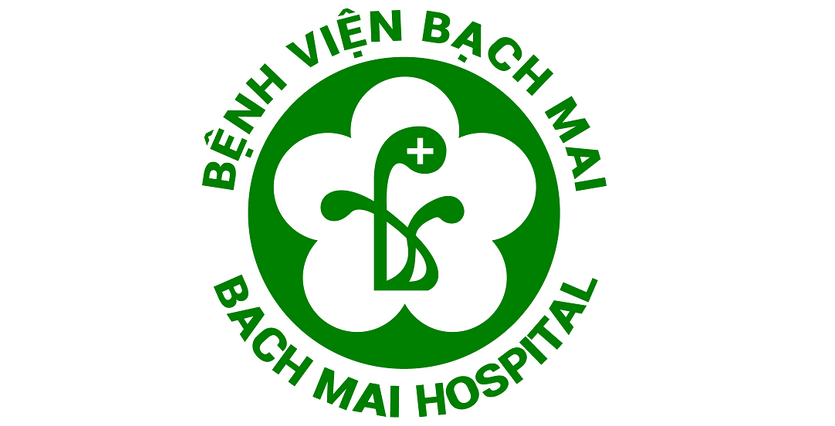Bệnh viện bạch mai * Bach Mai Hospital
Tạp chí Y học lâm sàng * Journal of Clinical Medicine
Website : www.jocm.vn Email : jocm@bachmai.edu.vn Phone : +84947040855
ĐẶC ĐIỂM LÂM SÀNG VÀ NHU CẦU CHĂM SÓC ĐIỀU DƯỠNG Ở NGÀY THỨ 7 CỦA NGƯỜI BỆNH CÓ HỘI CHỨNG CAI RƯỢU
- Mã bài báo : 125.03
- Ngày xuất bản : 31/12/2021
- Số trang : 23-29
- Tác giả : Đỗ Thị Hoa
- Lượt xem : ( 523 )
http://doi.org/10.52322/jocmbmh.125.03
TÓM TẮT
Đặt vấn đề: Trạng thái cai là một trong những biểu hiện chủ yếu khi ngừng hoặc giảm sử dụng rượu ở người nghiện rượu, khi đó người bệnh sẽ xuất hiện nhiều triệu chứng tâm thần và cơ thể như: run, vã mồ hôi, ảo giác... đòi hỏi được hỗ trợ chăm sóc.
Mục tiêu: Mô tả đặc điểm lâm sàng và nhu cầu chăm sóc của người bệnh có hội chứng cai rượu ở ngày thứ 7 điều trị nội trú tại Viện Sức khỏe Tâm thần.
Đối tượng và phương pháp nghiên cứu: 126 người bệnh rối loạn tâm thần liên quan đến sử dụng rượu (F10.) điều trị nội trú tại Viện Sức Khỏe Tâm thần. Phương pháp nghiên cứu mô tả cắt ngang.
Kết quả: Sau 7 ngày điều trị, các triệu chứng lâm sàng còn ảo giác (14,3%), hoang tưởng (28,6%), mất ngủ (4,8%). Có 1,6% người bệnh cần được theo dõi tình trạng mê sảng và 1,6% người bệnh cần được theo dõi và cảnh báo cơn co giật, không còn người bệnh nào cần theo dõi dấu hiệu sinh tồn nhiều lần trong ngày. Tuy nhiên, vẫn còn 93,7% người bệnh cần theo dõi thực hiện y lệnh thuốc 3 lần/ngày.
Kết luận: Ở thời điểm ngày 7 sau ngày điều trị, các triệu chứng rối loạn tâm thần và triệu chứng lâm sàng của người bệnh hội chứng cai rượu thấp. Phần lớn người bệnh có khả năng tự chăm sóc, nhu cầu sự hỗ trợ từ người nhà thấp tuy nhiên nhu cầu chăm sóc điều dưỡng vẫn rất lớn.
Từ khóa: hội chứng cai rượu, chăm sóc điều dưỡng ngày 7 sau điều trị
ABSTRACT
CLINICAL CHARACTERISTICS AND NEEDS FOR CARE IN DAY 7 OF PATIENTS WITH ALCOHOL WITHDRAWAL SYNDROME
Background: Withdrawal state is one of the primary expressions of alcoholics when they stop or reduce using alcohol, then patients will have many mental and physical symptoms such as tremor, sweating, hallucinations, which is required nursing care interventions.
Objective: To describe the clinical features and needs for nursing care of inpatients with alcohol withdrawal syndrome during the seventhday at the National Institute of Mental Health.
Material and Methods: 126 inpatients diagnosed with mental and behavioral disorders due to alcohol (F10) at the National Institute of Mental Health. We used cross-sectional design.
Results: After 7 days of treatment, clinical symptoms still hallucinations (14.3%), paranoia (28.6%), insomnia (4.8%). 1.6% of patients needed to be monitored the delirium and 1.6% of patients need to be monitored and warned for seizures, no more patients need to be monitored vital signs several times a day. However, there are still 93.7% of patients who need to be monitored to follow the medicine orders 3 times/day.
Conclusions: At day 7 after of treatment, psychotic and clinical symptoms of patients with low alcohol withdrawal syndrome. Most patients were able to take care of themselves, the need for support from family members is low, but the need for nursing care was still quitehuge.
Keywords: Alcohol withdrawal syndrome, nursing care day 7 after treatment
- DOI : http://doi.org/10.52322/jocmbmh.125.03
- Chủ đề : Sức khoẻ Tâm thần
- Loại bài báo : Nghiên cứu gốc
- Chuyên nghành : Điều dưỡng
 Thông tin liên hệ : Đỗ Thị Hoa
Thông tin liên hệ : Đỗ Thị Hoa Email : dohoabm2675@gmail.com
Email : dohoabm2675@gmail.com Địa chỉ : Viện Sức khoẻ Tâm thần Quốc gia, Bệnh viện Bạch Mai
Địa chỉ : Viện Sức khoẻ Tâm thần Quốc gia, Bệnh viện Bạch Mai
Bài báo liên quan
- ĐẶC ĐIỂM HÌNH THÁI MI TRÊN Ở NỮ NGƯỜI VIỆT TRƯỞNG THÀNH
- ĐỊNH DANH ĐẾN LOÀI MỘT SỐ CHỦNG MYCOBACTERIA BẰNG PHƯƠNG PHÁP GIẢI TRÌNH TỰ GEN
- ĐÁNH GIÁ TÌNH TRẠNG SẢNG SAU PHẪU THUẬT TIM MỞ VỚI TUẦN HOÀN NGOÀI CƠ THỂ
- ĐÁNH GIÁ QUÁ TRÌNH CHĂM SÓC ĐIỀU DƯỠNG CHO BỆNH NHÂN SAU PHẪU THUẬT NỘI SOI CẮT TÚI MẬT
- KẾT QUẢ SỐNG THÊM KHÔNG BỆNH VÀ MỘT SỐ YẾU TỐ LIÊN QUAN TRÊN BỆNH NHÂN UNG THƯ VÚ BỘ BA ÂM TÍNH ĐƯỢC HÓA TRỊ BỔ TRỢ TRƯỚC 4AC-4T LIỀU MAU TẠI BỆNH VIỆN K
- MỨC ĐỘ LO LẮNG VỀ BẠO HÀNH TẠI NƠI LÀM VIỆC CỦA HỌC VIÊN ĐIỀU DƯỠNG TRƯỜNG ĐẠI HỌC Y DƯỢC THÁI NGUYÊN VÀ MỘT SỐ YẾU TỐ LIÊN QUAN
- ĐẶC ĐIỂM DỊCH TỄ, LÂM SÀNG, CẬN LÂM SÀNG Ở BỆNH NHÂN NHIỄM ẤU TRÙNG GIUN ĐŨA CHÓ/MÈO (TOXOCARA) TẠI TRUNG TÂM BỆNH NHIỆT ĐỚI, BỆNH VIỆN BẠCH MAI
- XÁC ĐỊNH MỨC ĐỘ NHẠY CẢM VỚI THUỐC KHÁNG NẤM CỦA CHỦNG NẤM ASPEGILLUS PHÂN LẬP ĐƯỢC Ở BỆNH NHÂN NHIỄM NẤM PHỔI XÂM LẤN TẠI BỆNH VIỆN BẠCH MAI TỪ THÁNG 7/2020-6/2021
- TÌNH TRẠNG DINH DƯỠNG VÀ CHĂM SÓC ĐIỀU DƯỠNG BỆNH NHÂN XƠ GAN VÀ CÁC YẾU TỐ LIÊN QUAN TẠI TRUNG TÂM TIÊU HÓA- GAN MẬT, BỆNH VIỆN BẠCH MAI
- ĐẶC ĐIỂM LÂM SÀNG VÀ NHU CẦU CHĂM SÓC ĐIỀU DƯỠNG Ở NGÀY THỨ 7 CỦA NGƯỜI BỆNH CÓ HỘI CHỨNG CAI RƯỢU
- KẾT QUẢ PHẪU THUẬT NỘI SOI ĐIỀU TRỊ INSULINOMA KHÔNG SỬ DỤNG SIÊU ÂM NỘI SOI TRONG MỔ TẠI KHOA PHẪU THUẬT TIÊU HÓA GAN MẬT TỤY, BỆNH VIỆN BẠCH MAI
- TỔNG QUAN VỀ CHỈ ĐỊNH GHÉP GAN ĐIỀU TRỊ UNG THƯ BIỂU MÔ TẾ BÀO GAN
Bài viết mới nhất
- Tạp chí YHLS BVBM được phê duyệt mức điểm 0,75 trong Danh mục tạp chí khoa học được tính điểm năm 2024 của HĐGSNN
- Thư mời gửi bản thảo cho số tiếng Anh năm 2023 của Tạp chí Y học lâm sàng
- Chúc mừng Ngày Báo chí Cách mạng Việt Nam 21/06
- Giải thưởng Đặng Văn Chung: Tôn vinh giá trị sáng tạo và Nghiên cứu khoa học
- Quy định về định dạng bài báo theo định dạng chuẩn quốc tế

 File toàn văn
File toàn văn



